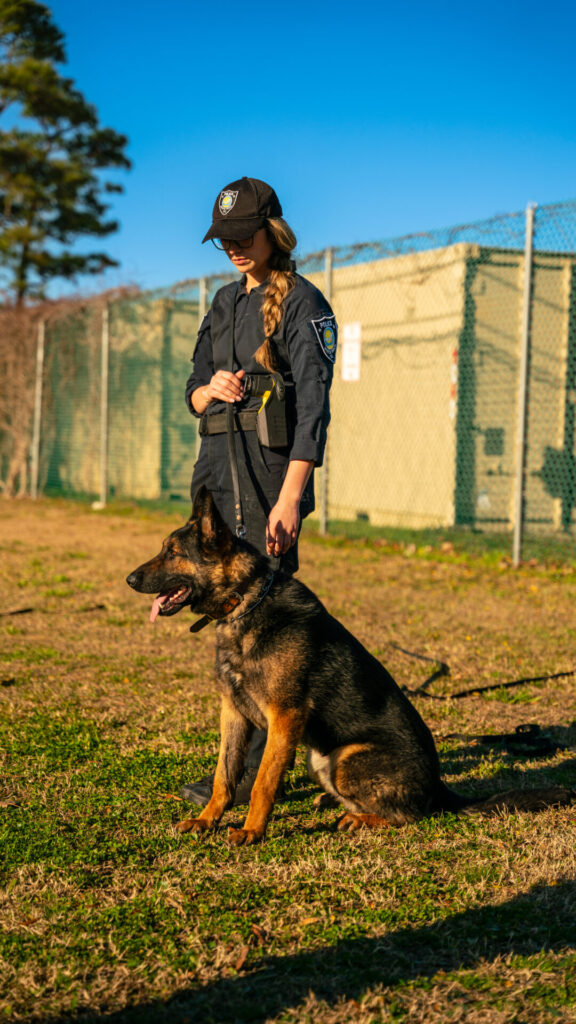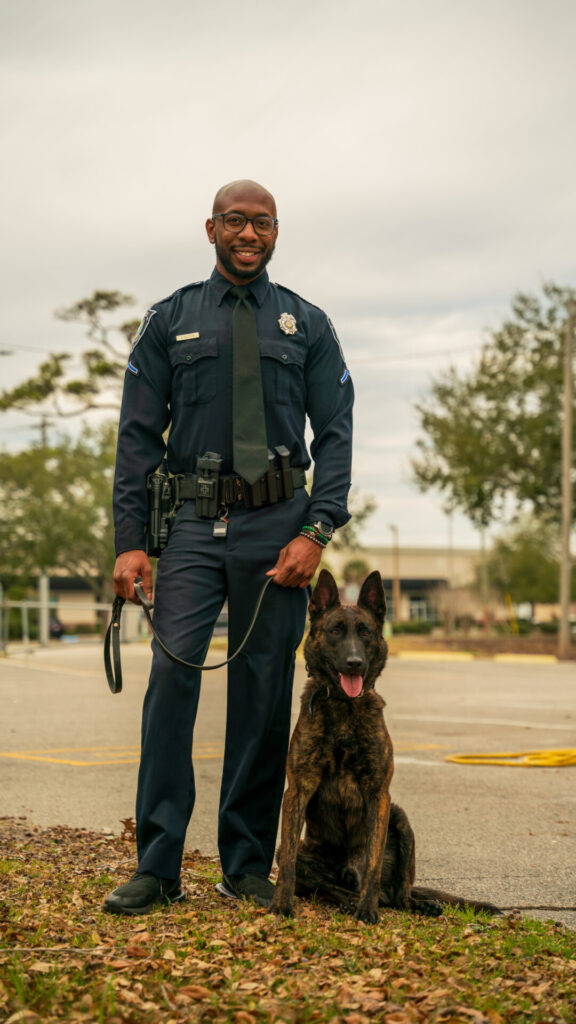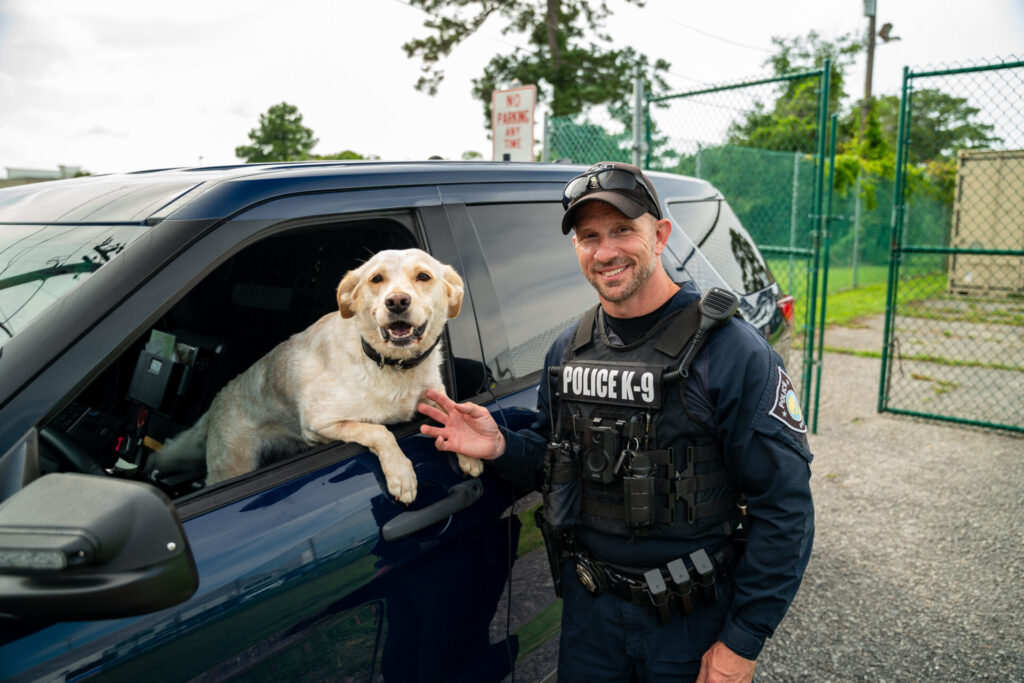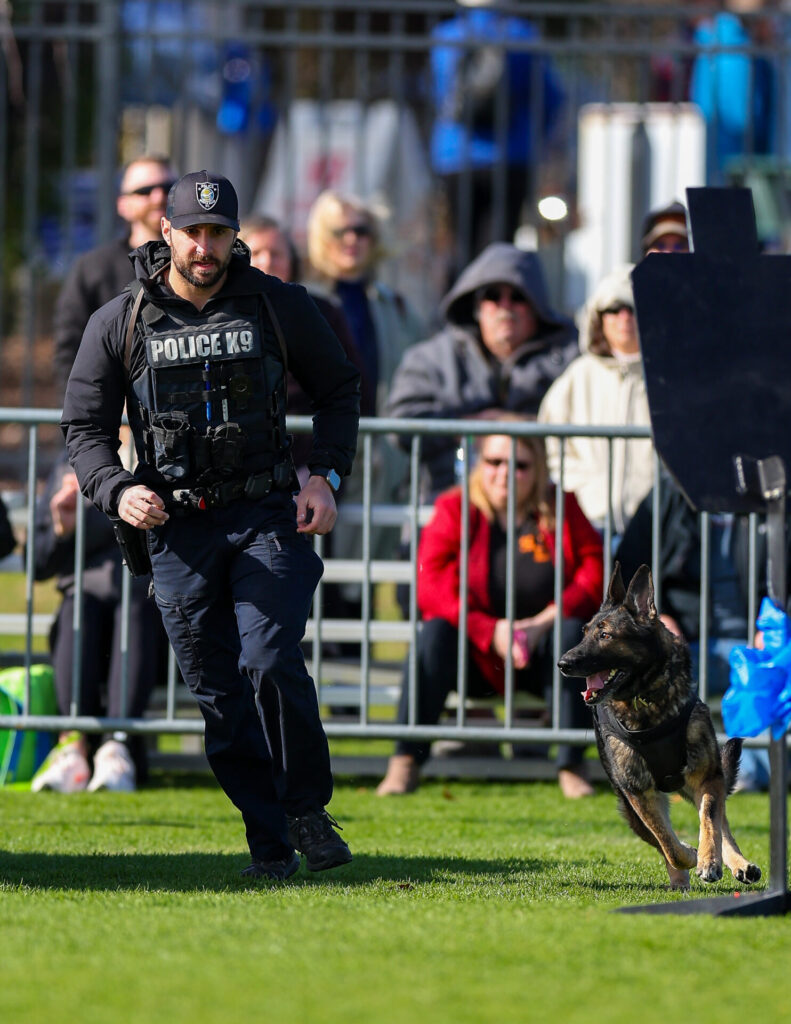
Subscribe to our newsletter
Enter your email address below and subscribe to our newsletter
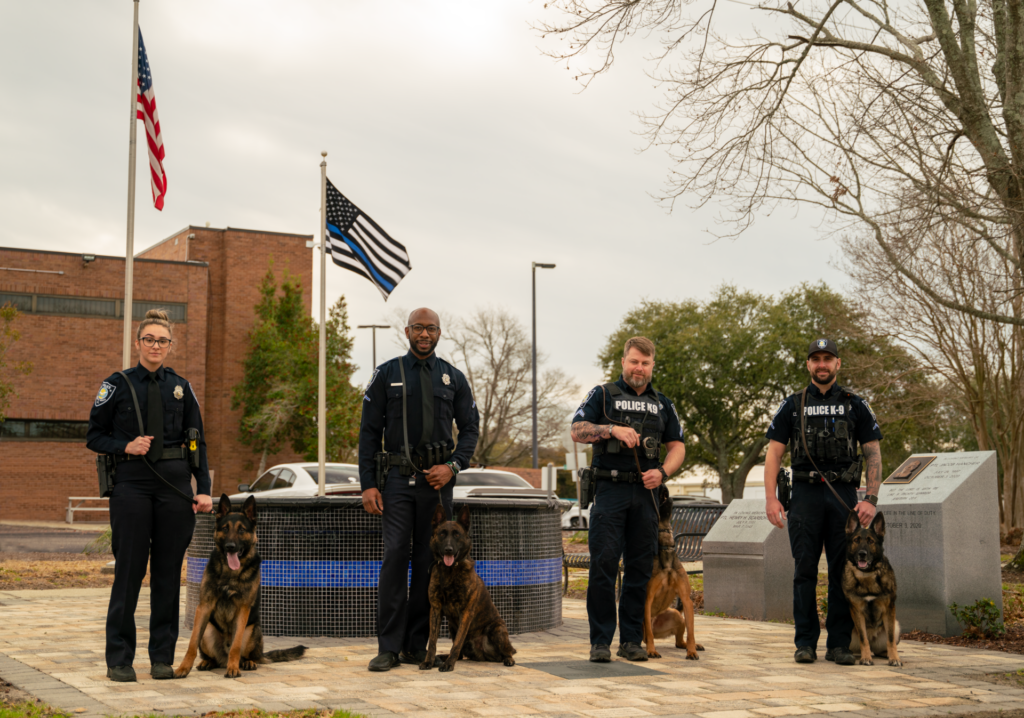
By Haley Brandon
The Myrtle Beach Police Department created the K-9 Unit in 2001. Since then, the program has grown extensively and continues to provide an essential service in apprehending criminals using trained canines and their law enforcement handlers, one of which is PFC Hanna Land.
Hanna was born and raised in Long Island, NY, where she attended a school with a DARE (Drug Abuse Resistance Education) program that consisted of a canine handler. “I was drawn in at that point. I’ve always been a huge dog lover and when I saw that you could take your dog to work every day with you, I was absolutely sold,” she says.
After moving to South Carolina at fifteen years old, Hanna became more interested in police work. At eighteen, she started participating in a community service officer program, which helped her get her feet in the door of policing and gave her an idea of what day-to-day police work looked like. She answered basic, non-emergency calls, facilitated school crossings, and started working with the K9 officers. “I’d set tracks for them or hide in the woods and wait for the dogs to find me. That’s what I started getting into at an early age,” she says. At the age of 21, Hanna became a class one police officer and officially joined the K9 unit at 23.
In January of 2024, Hanna was paired with her K9 companion, Goose, a German Shepherd/Belgian Malinois mix. Originally named Deuce, his name was quickly changed to fit his personality, that of a “silly goose.” To become a K9 handler, Hanna went to K9 school in Pennsylvania, where she spent six weeks training with Goose and learning the ins and outs of all he is trained in. “The dog is the expert. You’re just learning how to work with them,” she says. The dogs in the Myrtle Beach K9 unit are trained in different domains. Goose is trained in the odors of cocaine, methamphetamine, and heroin, as well as tracking human odor. This aids the police department in tracking suspects, pieces of evidence, and even missing persons. Goggles is trained in bomb detection, and the others are trained in narcotics odor and tracking. All the K9s are also trained in criminal apprehension and handler protection.
The K9 unit consists of:
Training K9s for police work is no easy or cheap feat. The K9s in the unit come from highly reputable breeders, usually overseas, who sell the dog to a training facility where the dog is trained in basic obedience and their specific domain, whether that be bomb detection, narcotics detection, tracking, etc. That training facility will then sell the fully trained dog to the police department. A fully trained K9 can run upwards of $15,000. The cost is well worth it, though, Hanna says. “They tell us, without even verbalizing it, so many things that we would never, ever know.”
Most of the K9s are taken home daily by their handlers, but Goose and Yogi are currently housed at the facility, mainly due to conflicts with HOAs. Many HOAs won’t allow the outdoor shelter required for these K9s, so the K9 department is trying to work out a new proposal to the city to allow pop-up crates inside the home instead. Hanna would love to bring Goose home each day, but for now, they have established a routine that works for them.
They start each day with their morning stroll, followed by breakfast and some basic obedience training. Then, they’ll head out on patrol and help different officers with anything they need, whether it’s attending traffic stops to search for narcotics or tracking an armed robbery suspect; no day is the same. Hanna notes that the K9s act as a valuable tool when apprehending suspects. In fact, she and Goose have never been involved in a contact apprehension, but they have had multiple non-contacts where the guilty party has peacefully surrendered – no officers got hurt, no dog got hurt, no suspect got hurt.
While on call, the K9s are driven in special vehicles outfitted specifically for the dog. All the K9 cars are equipped with monitoring systems that can message and call officers’ phones. If there were ever a malfunction with the vehicle, it would call 911, the car alarms would start blaring, the blue lights would flash, and all the windows would roll down to ensure the dog was safe.
It’s important to note that the relationship between a K9 handler and their dog extends well beyond professional duty. These dogs become part of the handler’s family, integrating into their daily lives and forming deep emotional bonds. “We put in so much work and constant training that people never see. Our entire lives revolve around these dogs…Every single waking moment, that’s your best friend. They become a family member, and they become integrated into your life. And we love our dogs dearly, we truly do,” says Hanna.
This is evident in the way retired dogs continue to live with their handlers, enjoying a well-deserved rest after years of service. For instance, K9 Daisy, who retired at the age of ten, still enjoys daily walks and visits the station occasionally with her handler, Shon, who now has Goggles. Once a dog is retired, the handler can choose to reapply with the K9 unit and be assigned a new dog, or the handler can move outside the unit to try to ascend in rank within the police department.
“These dogs, just like yours sitting at home right now, bring so much joy to the department. They make everyone’s day better. Just like any other dog, they walk up to you with wagging tails and want to be loved,” says Hanna. “That’s their biggest concern in life…their person and their toy.”
If being a part of the K9 unit interests you, Hanna encourages you to attend training days or offer to assist the K9 unit. You can find more information on the K9 unit at https://police.cityofmyrtlebeach.com/myrtle-beach-police-department-divisions/special-ops/K9/.
The K9 Unit also participates in dozens of public demonstrations throughout the community each year. To request a canine demonstration, contact the MBPD at (843) 918-1382 and ask to speak to the K9 Unit Supervisor.
